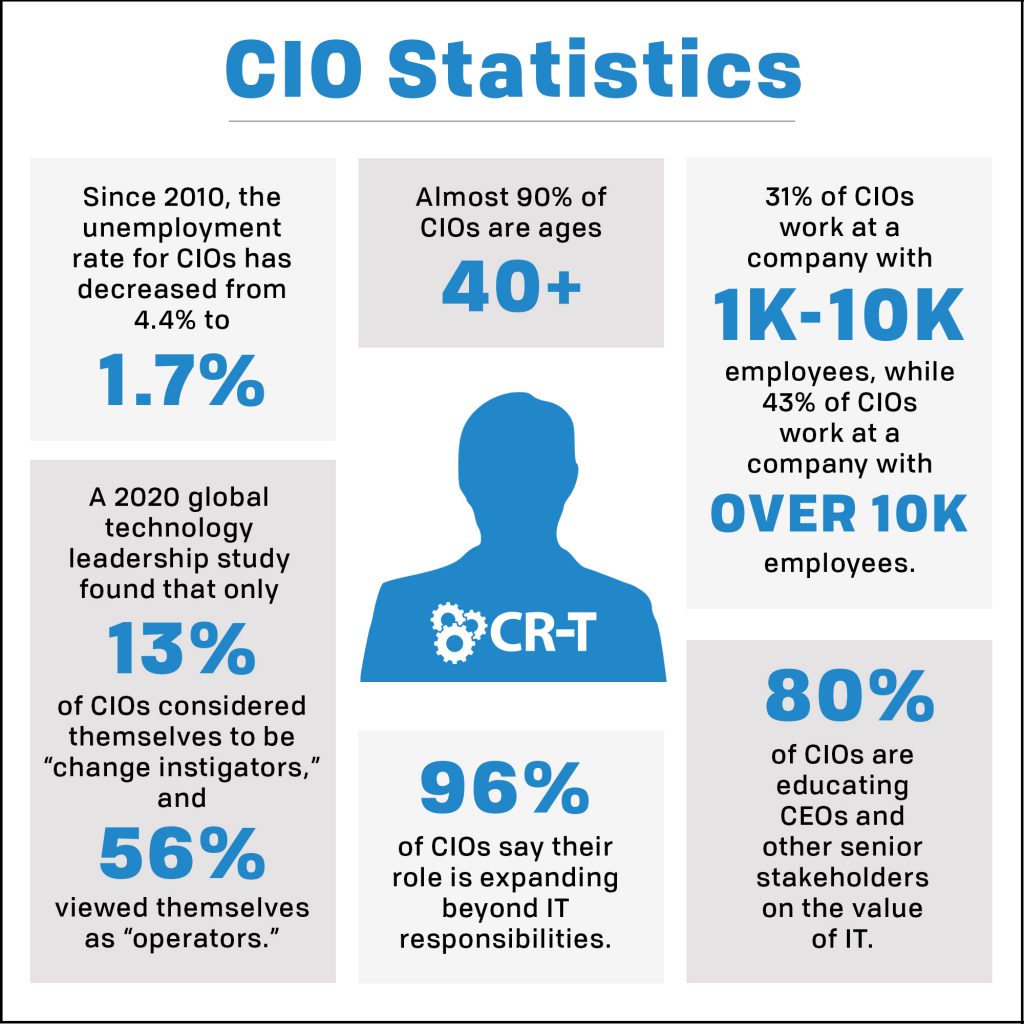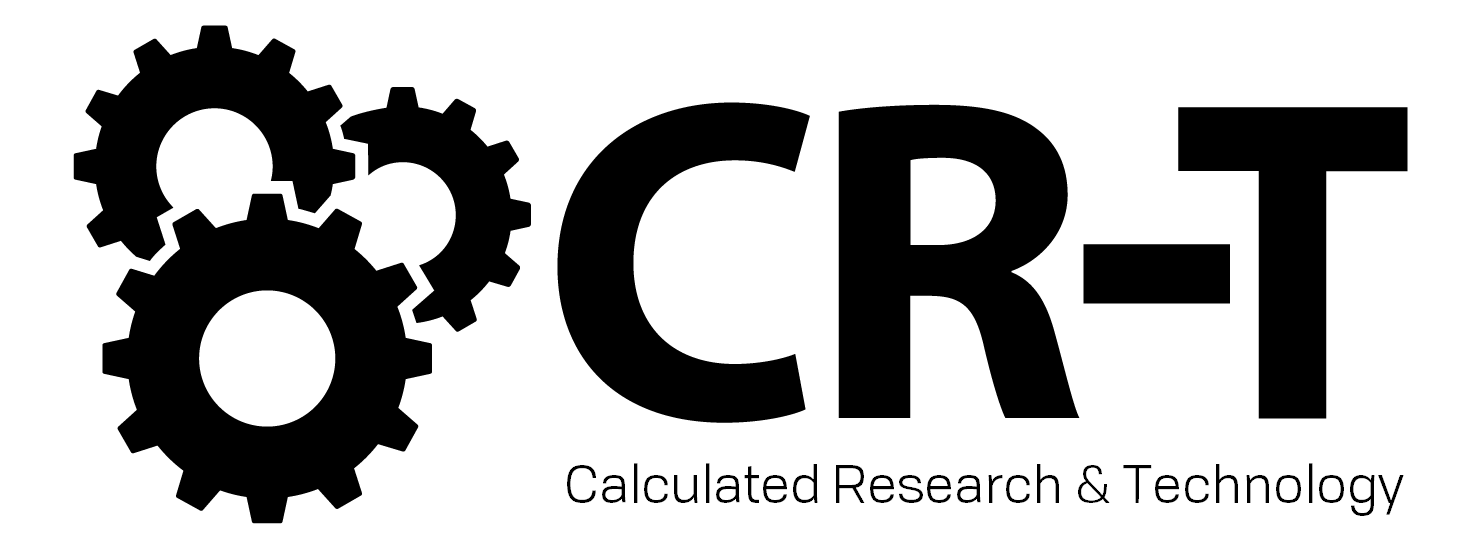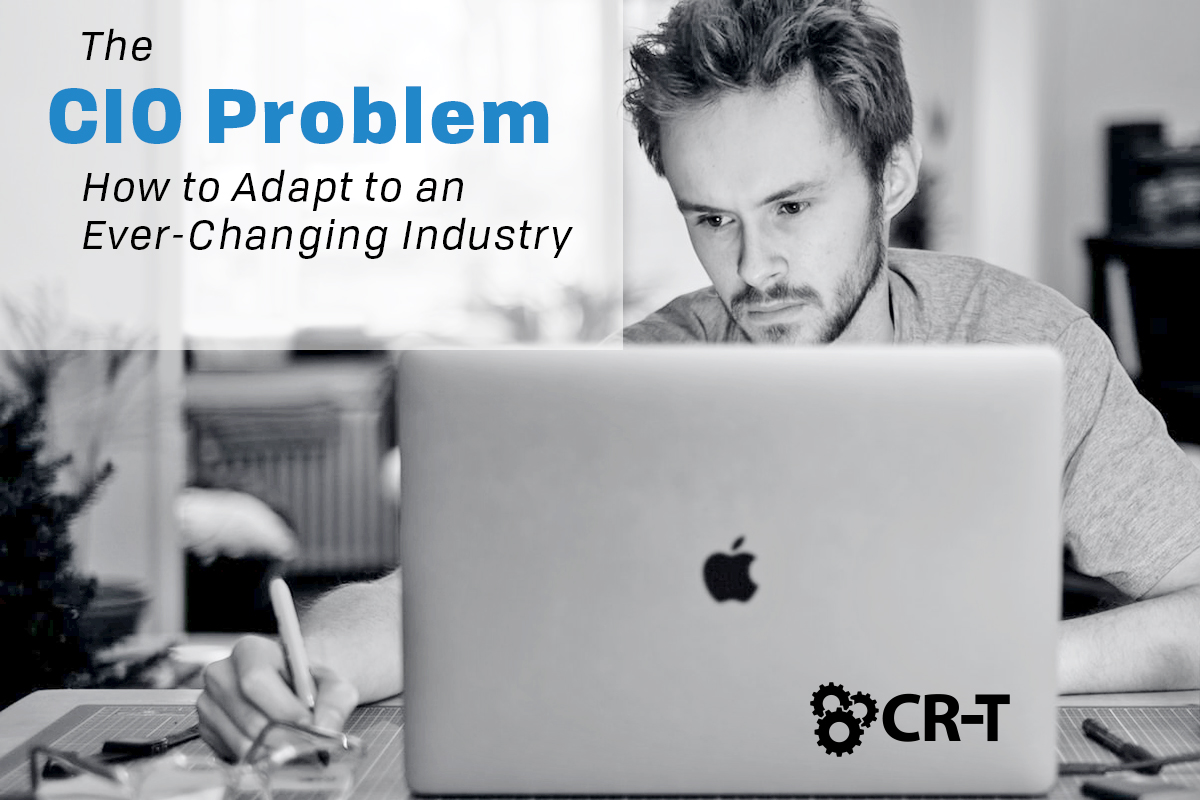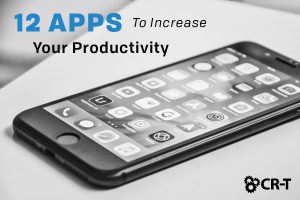Most of the technology we use regularly is fairly new. In the workplace, concepts like the cloud, cybersecurity, and digital media have only been around for a few decades at most. Even higher-level tech positions like the Chief Information Officer (CIO) are less than 50 years old.
But as the IT component of business becomes more complex, job roles expand, change, and even dissipate. With an ever-changing tech industry, is the CIO becoming obsolete?
It’s true that the role of the traditional CIO isn’t what it used to be. But that doesn’t mean that CIOs are suddenly irrelevant. In fact, the need for strong leaders with an understanding of technology and a desire to innovate has never been greater.
So what is the role of the CIO in a modern business setting?
What is a CIO?
- An administrator who operates the company’s internal systems
- A “disruptive innovator” who leads the company’s IT strategy
The Old School CIO
The “old school” CIO has been around for a while.
He grew with the company, rising through the ranks alongside the CEO. The CIO and CEO are often members of the same social circles. They play golf together on the weekends, and they’re both set to retire around the same time.
From an outsider’s perspective, the job looks pretty cushy.
But it wasn’t always this way.
The old school CIO started his career at the dawn of the Information Age. This person once was a young technician who managed data processing while also spearheading massive projects. When Internet usage became mainstream, the CIO had to handle all of the new IT systems while trying to predict how the Internet would affect business.
Over the years, more responsibilities were piled on the CIO’s plate, from increased vendor product offerings and virtual networks to data analytics and cybersecurity.
Yet somehow, the old school CIO was able to manage it all successfully.
If you’re looking for a seasoned CIO to join your company, here are a few traits to prioritize:
- Choose a CIO who works well with your staff. This person knows how to lead by example and cares about your employees’ lives, not just their work ethic. This type of CIO can produce the kind of loyalty that gets more work done than a pay raise.
- Choose a CIO who’s a problem solver. This person isn’t afraid of facing new challenges and taking the lead at overcoming obstacles. Instead of reporting problems to the CEO, the CIO takes the initiative and solves the problem themselves.
- Choose a CIO who offers support and stability. This CIO can become a trusted advisor because they choose not to get political. They’re friendly and helpful, but they also know how to set boundaries. They keep the company running smoothly without getting sidetracked.
A younger CIO might appear energetic and flashy, but don’t overlook the value of the old school CIO. They have a level of experience that can strengthen the rest of your company.

The Renaissance CIO
- Choose a CIO who isn’t highly technical. Instead, this CIO is focused on innovation and growth. They might not have been learning code in the ’80s, but they’ve grown up in the digital age, and they’re motivated to implement new tools that will set you ahead of the competition. The Renaissance CIO is customer-centric, and they thrive on a connection between satisfied customers and business growth.
- Choose a CIO who has experience outside of IT. Now, this doesn’t mean someone who’s clueless about technology. They still need to understand how to manage an IT department. But a Renaissance CIO seeks new experiences that will allow them to better understand the big picture. Liberal arts, communication, and project management all give this CIO greater breadth and knowledge when it comes to their role within the company.
- Choose a CIO who is highly social. This might sound strange, but a CIO’s job isn’t limited to IT. They’re here to solve problems. By collaborating with other employees, the Renaissance CIO can learn about the company’s needs and more easily find technological solutions to solve them.
In Pursuit of the Perfect CIO
For the modern CIO, the job involves two full-time pursuits that are both equally demanding.
Their primary responsibility is making sure that critical systems run smoothly.
But now, CIOs are also expected to drive business strategies through technological advancements.
Most CIOs would probably prefer to spend more time as a strategic visionary than a day-to-day administrator, but unfortunately, they don’t have the luxury of choosing one over the other. They’re expected to do both.
So how can you possibly find a hardworking, visionary, experienced CIO who can handle it all?
The short answer is: you can’t.
But that doesn’t mean you need to abandon hope. Instead, maybe it’s time to offer the CIO some help.
Here are a few ways to lighten the load of your CIO so they can narrow their focus and remain productive without burning out.
- Hire a Chief Digital Officer (CDO). According to PCW, 21% of large public enterprises had a CDO as of 2020. So what does the CDO do? Basically, the CDO’s job is to drive digital innovation and transform business processes. While the CIO is focused on automating existing processes and maintaining legacy systems, the CDO is creating new business processes and optimizing digital experiences to move the business forward. The traditional CIO is the manager of continuity, while the CDO becomes the manager of change.
- Hire a Chief Customer Officer (CCO). The CCO is defined as the executive in charge of the organization’s relationship with its customers. Their job is to engage customers in a way that allows the company to learn how to create better experiences for them. The CCO’s position sits between analytical and relational as they examine the data and translate those numbers into advocacy for the customer.
- Hire a Chief Data Officer (CDO). IBM estimates that 90% of all data has been created in the last two years. And companies collect more of this data every year. But how much of the data is actually usable? Enter the Chief Data Officer. Externally, the CDO is on the lookout for useful data resources. Internally, the CDO needs to make sure the right data is getting to the right people and that those people understand how to use the data as a strategic asset.
- Hire a Chief Information Security Officer (CISO). Of the roles listed so far, this one is perhaps the most important. Forbes reported that 80% of IT leaders believe their organizations lack sufficient protection against cyber attacks. The relationship between a company’s CIO and its security has changed dramatically over the last several years. And while hiring a CISO offers no guarantee that your company will be protected from a data breach, it minimizes the chances that security will be overlooked in the myriad of responsibilities a CIO possesses.
CIOs Are Only Part of the Equation
A single individual might not have the bandwidth to manage an organization’s systems while also utilizing technology to create innovative strategies. But knowing what your company needs from a leader will help you fill the appropriate roles within your organization.
Are you looking for someone with knowledge and experience who can oversee your day-to-day operations? Or do you want a disruptive innovator who will push the boundaries of your current system and look for new ways to move the business forward?
No, the role of the CIO is not obsolete.
Instead, that role is constantly changing and expanding. It’s your job as the business owner to decide how that role will fit within your organization and who is the right person to fill it.
Here at CR-T, we take pride in providing enterprise-level IT services at prices that work for small businesses. Our team of experts can become your IT support department, responding to issues quickly, often before you even know about them. Covering everything from your servers and network infrastructure to your computers, workstations, and mobile devices, we provide end-to-end solutions for all your technology needs.
Time and experience have helped us develop best practices and workflow procedures designed to keep your focus on your business, not your technology.
Blog & Media
Cloud Services
Managed IT Support
Cyber Security
Project Services
Servers/Infrastructure
Firewalls
Networking
Hardware/Software
Microsoft Products/Cloud
Amazon Web Services
Penetration Testing vs Vulnerability Scanning
If you’re responsible for managing the security of your organization’s network or systems, you may have heard the terms “penetration testing” and “vulnerability testing” thrown
Backup and Disaster Recovery
Your organization can’t afford to neglect backup and disaster recovery. If it takes your business too long to get back online after a disaster, you
6 Steps to Secure Customer Data
Securing customer data is essential for one major reason: your business depends on it. As an IT director, you recognize the importance of cybersecurity when
5 Steps to Promote Compliance in the Workplace
You’re familiar with the ever-changing world of regulatory compliance. Robust compliance enables you to avoid legal liabilities while improving your organization’s effectiveness. And many of






